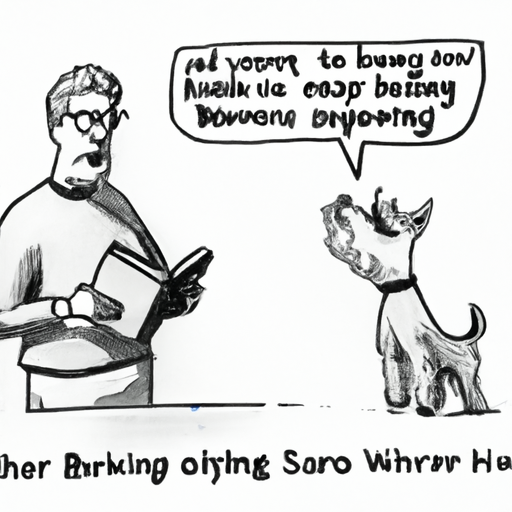As a caring pet parent, the relentless barking of your dog can be a source of worry. However, with the right approach, you can bring this excessive barking under control. Let’s delve into techniques and strategies to help you manage this situation.
Understanding Why Dogs Bark
Dogs bark for a variety of reasons. It’s a form of communication, expressing emotions such as fear, excitement, or boredom. Here are some reasons why your dog might be barking excessively:
- Attention-seeking: Your dog might simply want to play or looking for a treat.
- Boredom or loneliness: Dogs left alone for long periods may resort to barking.
- Fear: Unfamiliar sights, sounds, or people can trigger fear-based barking.
- Separation anxiety: Dogs suffering from separation anxiety tend to bark excessively when left alone.
Training Your Dog to Stop Barking
Once you’ve identified the cause, you can start with the training. Remember, patience and consistency are key. Here are some steps you can follow:
- Ignore the barking: Don’t react to the barking; instead, give your dog attention when they’re quiet.
- Teach the “Quiet” command: Use a firm but gentle voice to command your dog to stop barking.
- Remove the motivation: If possible, remove the trigger that causes the barking.
- Use distraction: Divert your dog’s attention with a toy or a game when they start barking.
| Step | Action | Example |
|---|---|---|
| 1 | Ignore the barking | Don’t look at or talk to your dog |
| 2 | Teach the “Quiet” command | Say “Quiet” in a firm voice |
| 3 | Remove the motivation | Close the blinds if your dog barks at people passing by |
| 4 | Use distraction | Give your dog a chew toy |
Using Positive Reinforcement
Reward your dog for good behavior. This could be treats, toys, or simply showering them with affection. Positive reinforcement encourages good behavior.
Getting Professional Help
If your own efforts aren’t working, consider seeking a professional dog trainer or a behaviorist. They can provide a tailored training program for your dog’s needs.
Using Bark Control Devices
There are several devices available that can help control barking. These include ultrasonic devices, spray collars, and static correction collars. Use these devices judiciously, and never as a substitute for proper training and care.
Tips for Preventing Excessive Barking
- Ensure your dog gets plenty of exercise and mental stimulation.
- Keep a consistent daily routine.
- Socialize your dog with other dogs and people.
- Use dog-friendly relaxation techniques like soft music or aromatherapy.
Frequently Asked Questions (FAQ)
Q: How long does it take to train a dog to stop barking?
A: The duration varies based on the dog’s age, temperament, and the cause of barking. It could take a few weeks to a few months.
Q: Can I use a bark control collar for my puppy?
A: It is not recommended to use bark control devices for puppies under 6 months.
Q: Is my dog barking because they are angry?
A: Not necessarily. Dogs bark to communicate various emotions, not just anger.
Q: How can I tell if my dog’s barking is a problem?
A: If your dog’s barking is causing distress, disrupting sleep, or leading to complaints from neighbors, it might be an issue.
Remember, your dog’s excessive barking is a sign of an underlying issue. Understanding this can help you address the problem more effectively. Be patient, and remember, every dog has their own personality and pace of learning.



